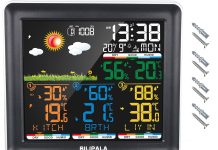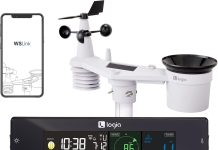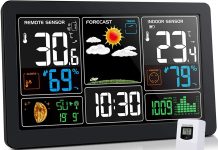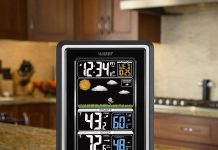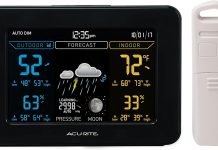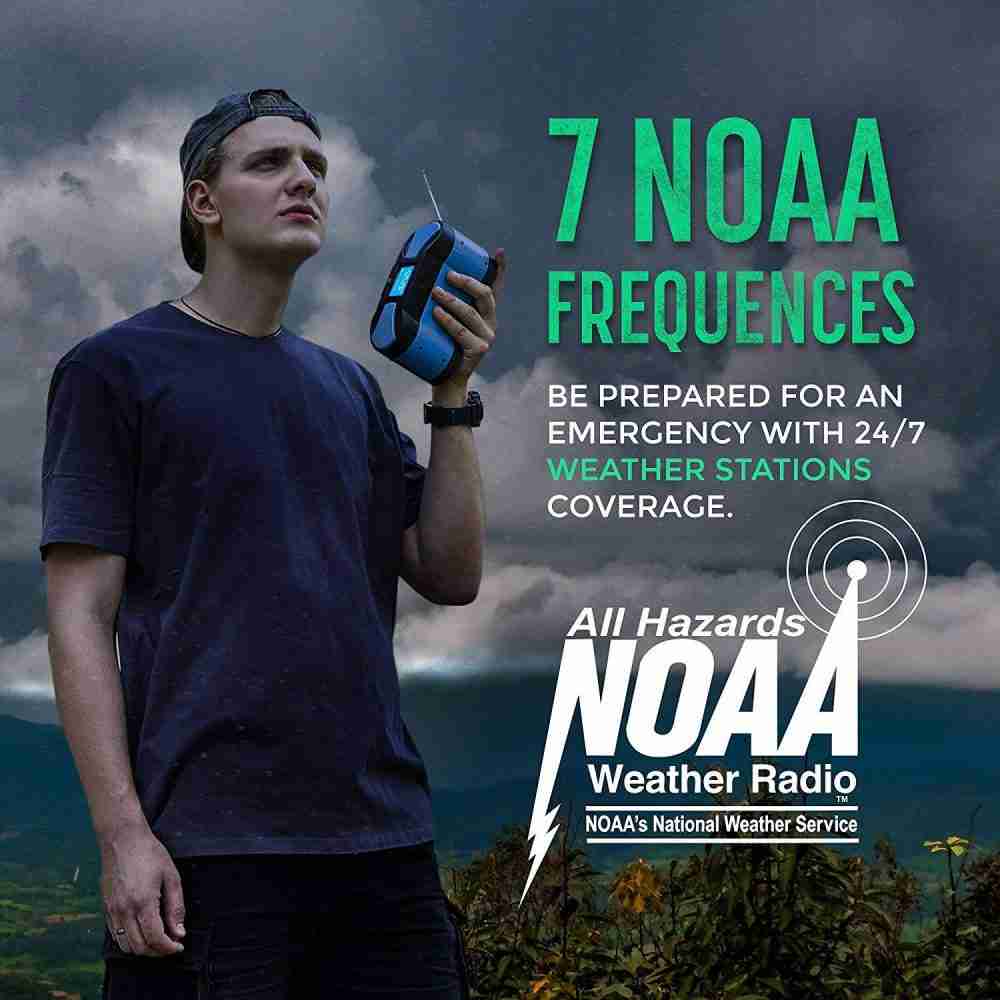Animals have fascinated humans for centuries, and their ability to predict the weather has been discussed for just as long. From cows lying down in a field to squirrels building their nests high in a tree, many animals are believed to be able to predict the weather.
While some of these beliefs seem like old wives’ tales, they have some truth. For example, cats are known for their sensitivity, and many believe that this heightened sensitivity allows them to foretell thunderstorms and bad weather.
The senses of a cat are far superior to those of humans. As a result, they can sense a decrease in air pressure, and their enhanced hearing allows them to hear thunder that is still far away.
In this article, we will explore some of the animals that are believed to be able to predict the weather and the science behind their abilities.
Historical Overview of Weather Prediction in Animals
Animals have been used to predict the weather for centuries. The practice is steeped in folklore and legend and continues to this day. We have long believed that animals possess an innate ability to sense environmental changes and act accordingly.
One of the most famous examples of animal weather prediction is Groundhog Day, which originated in the United States. According to tradition, if a groundhog emerges from its burrow on February 2 and sees its shadow, there will be six more weeks of winter. If it does not see its shadow, spring will arrive early. The most famous groundhog who performs this annual ritual is Punxsutawney Phil in Pennsylvania.
Cows are another animal that is believed to be able to predict the weather. According to the Old Farmer’s Almanac, when cows lie down in a field, it is said to be a sign that rain is on the way. This is likely because cows are sensitive to changes in barometric pressure, which can signal an approaching storm.
Frogs are also said to be able to predict the weather. When they croak loudly, it is a sign that rain is on the way. This is likely because the sound of their croaking is amplified by the moisture in the air, which can indicate that there is more moisture on the way.
Overall, using animals to predict the weather is an ancient practice that continues to this day. While no scientific evidence supports the idea that animals can predict the weather with any accuracy, it remains a fascinating and enduring tradition.
Scientific Basis of Animal Weather Prediction
There is some scientific basis for the idea that animals can predict the weather. While it may seem like magic, a few factors can explain this phenomenon.
Firstly, animals are susceptible to changes in the environment. They can sense even the slightest fluctuations in temperature, air pressure, humidity, and other factors associated with weather changes. For example, cows are known to lie down in the pasture before rain, and birds evacuate before significant storms.
Secondly, animals have a keen sense of infrasound, which are waves below the range of human hearing. These sound waves are generated by storms, earthquakes, and other natural phenomena, and animals can sense them before humans can. This gives them an early warning system for impending weather changes.
Thirdly, animals are sensitive to the Earth’s magnetic field. This is because the magnetic field influences the behavior of charged particles in the atmosphere, affecting weather patterns. Some animals, such as birds, use the magnetic field to navigate during migration.
Finally, some animals are sensitive to radon gas released from the ground. This gas is associated with weather changes; animals can sense it before humans can.
Overall, while the scientific basis of animal weather prediction is not fully understood, several factors can explain this phenomenon. By observing animal behavior, we can better understand how weather patterns work and how they affect the environment.
Animals and their Weather Predicting Abilities
When it comes to predicting the weather, humans have relied on various methods over the years.
However, did you know that some animals are believed to be able to predict the weather? This section will explore some well-known animals and their supposed weather-predicting abilities.
Birds and Weather Prediction
Birds are known to have an exceptional sense of hearing and can detect changes in air pressure, which is why they can predict the arrival of a storm. Some birds, like swallows, martins, and swifts, fly low to the ground when a storm is approaching, while seagulls fly inland before a storm arrives.
Cows and Weather Prediction
Cows are believed to be able to predict the weather by lying down in a field before it rains. This behavior is thought to be caused by the cows’ sense of smell, which can detect the change in humidity in the air.
Frogs and Weather Prediction
Frogs are known to croak more loudly before it rains, which is believed to be a sign of their ability to predict the weather. This behavior is thought to be caused by the frogs’ sense of hearing, which can detect changes in air pressure.
Groundhogs and Weather Prediction
Groundhogs are known for their supposed ability to predict the arrival of spring. According to tradition, if a groundhog sees its shadow on February 2, there will be six more weeks of winter. If it does not see its shadow, then spring will arrive early.
Crickets and Weather Prediction
Crickets are believed to be able to predict the temperature by the rate at which they chirp. The higher the temperature, the faster they chirp, and the lower the temperature, the slower they chirp.
Cats and Weather Prediction
Cats are believed to be able to predict the weather by their behavior. They are known to become restless and agitated before a storm arrives, which is thought to be caused by changes in air pressure.
Sharks and Weather Prediction
Sharks are believed to be able to predict the arrival of a hurricane by sensing changes in water pressure and temperature. They will swim to deeper waters to avoid the storm.
Ants and Weather Prediction
Ants are believed to be able to predict the weather by their behavior. They are known to build their nests higher when rain is expected to prevent flooding.
Bears and Weather Prediction
Bears are believed to be able to predict the arrival of a harsh winter by their behavior. They will eat more food than usual and build dens in preparation for the cold weather.
Dogs and Weather Prediction
Dogs are believed to be able to predict the weather by their behavior. They are known to become restless and agitated before a storm arrives, which is thought to be caused by changes in air pressure.
Fish and Weather Prediction
Fish are believed to be able to predict the weather by their behavior. They will swim to deeper waters when a storm approaches to avoid the rough water near the surface.
Bees and Weather Prediction
Bees are believed to be able to predict the arrival of a storm by sensing changes in air pressure. They will return to their hive and become more agitated before a storm arrives.
Butterflies and Weather Prediction
Butterflies are believed to be able to predict the weather by their migration patterns. They will migrate earlier or later, depending on the weather conditions.
Squirrels and Weather Prediction
Squirrels are believed to be able to predict the arrival of a harsh winter by their behavior. They will gather more food than usual and build dens in preparation for the cold weather.
Overall, while these animals are believed to have weather-predicting abilities, it is essential to note that their predictions are not always accurate. However, it is fascinating to learn about how animals interact with the environment around them.
Weather Phenomena and Animal Behavior
Animals and Storms
Animals have been observed to behave differently before and during storms. Some animals, like cows, horses, and birds, seek shelter before a storm hits.
Cows have been observed to become restless and antsy before a storm and begin to swat flies with their tails or gather together in a group. Birds, like the albatross, can be significantly affected by changes in the weather. They have been observed to fly higher or lower depending on the pressure changes in the air.
Animals and Rain
Many animals have been observed to change their behavior when it starts to rain. For instance, some animals, like ants and spiders, move to higher ground to avoid flooding.
On the other hand, some animals, like frogs and toads, tend to come out of hiding and become more active during a rainstorm.
Animals and Hurricanes
Hurricanes are known to cause significant damage to property and loss of life. Animals tend to sense the approaching danger and take necessary precautions. For instance, some birds and bats fly away from the hurricane’s path. Similarly, some animals, like horses and cows, seek shelter before the hurricane.
Animals and Tornadoes
Tornadoes are known to cause significant damage to property and loss of life. Animals tend to sense the approaching danger and take necessary precautions.
For instance, animals, like cows and horses, tend to run away from the tornado’s path. Similarly, some birds tend to fly away from the tornado’s path.
Animals and Earthquakes
Animals have been observed to behave differently before and during earthquakes. Some animals, like dogs, cats, and birds, become restless and agitated before an earthquake. Similarly, some animals, like snakes, rats, and frogs, move away from the earthquake’s epicenter.
Animals and Temperature Changes
Animals tend to be very sensitive to changes in temperature, and they have been observed to change their behavior accordingly. For instance, some animals, like bears and raccoons, tend to hibernate during the winter deep freeze. Similarly, some animals, like birds, migrate to warmer climates during winter.
In conclusion, animals have been observed to behave differently before and during different weather phenomena. While some of these observations may be anecdotal, they provide insight into how animals sense and respond to environmental changes.
Modern Weather Prediction and Animals
We have come a long way in predicting the weather. From using plant particles to predict rain to modern-day radar and weather apps, we have significantly progressed in understanding the science behind weather prediction. Today, we rely on sophisticated technology and data analysis to forecast the weather accurately.
The National Weather Service, AccuWeather, and Weather.com are some of the most popular sources of weather information. These sources use satellite data, weather stations, and other sources to provide accurate weather forecasts. Additionally, many weather apps are available for smartphones, which provide real-time weather updates and alerts.
Despite the advances in technology, animal meteorologists continue to fascinate us. Animals such as cows, snakes, and wolves have been associated with weather-predicting abilities for centuries. While no scientific evidence supports these claims, many still believe in their accuracy.
One of the earliest animal weather predictors was Amos Dolbear, who observed the behavior of crickets in the late 1800s. He found that crickets chirp at different rates depending on the temperature. While Dolbear’s findings were not entirely accurate, they did pave the way for further research into animal weather prediction.
In recent years, some researchers have attempted to study the correlation between animal behavior and weather patterns. For example, a study by the BBC found that cows tend to lie down when a low-pressure system is approaching. However, the study did not find a significant correlation between cow behavior and weather patterns.
In conclusion, while animal weather prediction may be fascinating, modern technology is more reliable and accurate. We should rely on data-driven weather forecasts from trusted sources such as the National Weather Service, AccuWeather, and Weather.com. However, we can still appreciate the curiosity and wonder that animals bring to our lives, even if they are not the most reliable weather predictors.
Animals and Climate Change
As animals have adapted to the seasonal changes in their environment, they have developed unique abilities to predict weather patterns. However, with the onset of global warming, the predictability of these patterns has become increasingly difficult.
As we continue to experience drastic changes in our climate, it is essential to understand how animals adapt and what we can learn from them. Some animals, such as birds and butterflies, have been observed changing their migration patterns in response to shifts in temperature and precipitation.
Other animals, such as polar bears and penguins, face significant challenges as their habitats rapidly change due to melting ice caps. These changes, in turn, affect food availability and can lead to population declines.
While animals have developed unique abilities to predict weather patterns, it is essential to remember that they are not immune to the effects of climate change. As we continue to learn more about how our planet is changing, we must work to protect and preserve the natural habitats of these animals.
In conclusion, animals have much to teach us about our changing climate. By studying their behavior and adaptations, we can better understand the impact of global warming on our planet and work towards finding solutions to protect our ecosystems and the animals that call them home.
Fact Vs. Fiction in Animal Weather Prediction
When it comes to animal weather prediction, there is a lot of folklore and myths. Some of it is based on fact, while others are pure fiction. This section will explore the difference between fact and fiction in animal weather prediction.
Fact
Animals have a keen sense of their environment. They can detect minute environmental changes, such as temperature, humidity, and air pressure. For example, cows tend to urinate more frequently when a storm approaches. This behavior is due to the drop in air pressure that occurs before a storm.
Another fact is that some animals, such as birds, can sense changes in the Earth’s magnetic field. This ability helps birds navigate during migration.
Fiction
While some animals have weather-predicting powers, not all can predict the weather. Some of the folklore surrounding animal weather prediction is pure fiction. For example, the belief that a groundhog’s shadow on Candlemas Day can predict the weather for the rest of the winter is not based on fact.
Similarly, the belief that a woolly bear caterpillar’s stripes can predict the severity of the upcoming winter is also not based on fact. The caterpillar’s age determines the width of the stripes on a woolly bear caterpillar and not the severity of the winter.
Hope
Despite the fiction surrounding animal weather prediction, many people still hold onto the hope that animals can predict the weather. This hope is not entirely unfounded, as some animals have weather-predicting powers.
For example, cows lying down in a field can indicate that rain is on the way. This behavior is because cows are more comfortable lying down when the ground is dry. Cows lie down to keep their udders dry when rain is on the way.
In conclusion, while some animals have weather-predicting powers, not all can predict the weather. It is essential to separate fact from fiction regarding animal weather prediction.
Frequently Asked Questions
What are some examples of famous weather-predicting animals?
Many animals are believed to predict the weather. Some of the most famous are cows, cats, dogs, and birds.
According to the Old Farmer’s Almanac, cows lying down in a field is a sign of rain, while cats sneezing and dogs eating grass can indicate an impending storm. Birds flying low to the ground may also indicate that a storm is coming.
How do animals predict weather conditions and seasons?
Animals have very sensitive senses that allow them to detect environmental changes. For example, cows can sense barometric pressure changes and tell when a storm is coming. Birds can detect changes in wind patterns and use this information to navigate during migration. Some animals also have an innate sense of time and can tell when to migrate or hibernate based on changes in daylight and temperature.
Which animals are known for predicting rain?
Cows are perhaps the most famous animals for predicting rain. When cows lie down in a field, it is said to be a sign of rain. Other animals believed to predict rain include cats, dogs, and birds.
Cats may become restless or sneeze before a storm, while dogs may eat grass or become agitated. Birds may fly low to the ground or gather in large groups before a storm.
What are some signs in nature that predict the weather?
Many signs in nature can predict the weather. For example, a red sky at night can signal good weather the next day, while a red sky in the morning can signal rain.
The behavior of animals can also be a sign of impending weather, as discussed earlier. Other signs in nature that can predict weather include the appearance of certain clouds, changes in wind direction, and the presence of fog or dew.
Why is predicting weather difficult?
Predicting the weather is problematic because many factors influence it, including temperature, humidity, air pressure, and wind patterns.
These factors constantly change, making it difficult to predict the weather accurately. In addition, large-scale phenomena such as El Niño or global warming can influence weather patterns, making it even more difficult to predict long-term weather patterns.
What animals are believed to be able to predict hurricanes?
There are no animals that can predict hurricanes with complete accuracy. However, some animals may be able to sense changes in the environment associated with hurricanes.
For example, birds may be able to detect changes in wind patterns and air pressure, while fish may be able to sense changes in ocean currents. However, these abilities are not foolproof and should not be relied upon as the sole means of predicting hurricanes.


